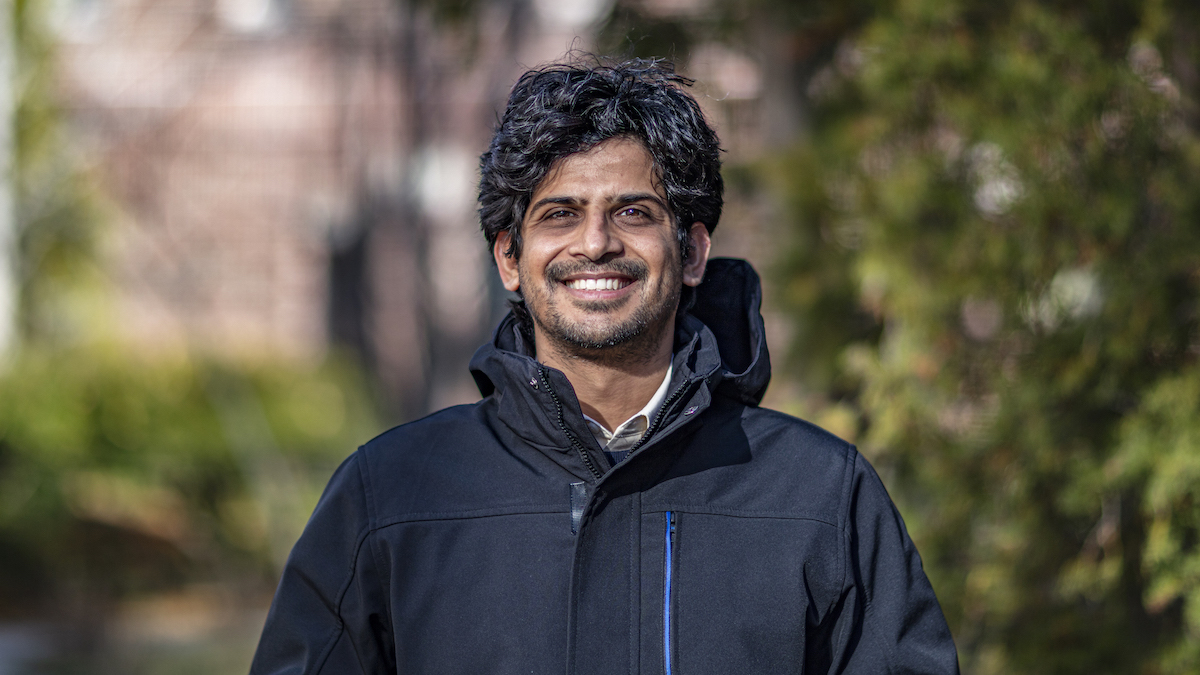
Dhiman helps machines learn, studies autonomous vehicles as a new faculty member at UMaine
Growing up, Vikas Dhiman didn’t enjoy doing chores, and told his friends that he would one day build a robot to do them.
While he is now an accomplished roboticist, Dhiman admits that doing chores is much easier than programming a robot to do them. At his former university, the Indian Institute of Technology Roorkee, India, Dhiman was a part of the electrical engineering department and a robotics club, where he participated in competitions.
As he moved through his undergraduate program, Dhiman warmed up to the idea of doing research with robots. Instead of just using hacks that he learned in his robotics club or writing simple if/then statements to make them work, he began testing complex mathematical models and using machine learning technologies.
Dhiman earned a master’s in computer science and engineering from the State University of New York at Buffalo and then a PhD in Robotics from the University of Michigan, Ann Arbor. His research focussed on machine learning and autonomous vehicles.
After finishing his postdoctoral work at the Jacobs School of Engineering at the University of California San Diego, Dhiman joined the University of Maine’s Electrical and Computer Engineering department as an assistant professor this past summer.
His most recent work looks at how autonomous vehicles react to obstacles. For example, when learning the dynamics of a robot, or a vehicle — that is how far the steering wheel would have to rotate to get the car to turn, or how far down you would have to push the gas pedal to accelerate — he would study how to ensure safety even if the dynamics are not fully learned.
Dhiman uses Bayesian learning algorithms in his research to account for uncertainty, which helps account for some of the human elements of driving. Unlike conventional learning algorithms, the Bayesian learning algorithms give him a range of possible values to use in his model, instead of a single value
Bayesian learning algorithms are called so after Bayes’ theorem to determine the conditional probability of a hypothesis. Bayes’ theorem was first introduced by Reverend Thomas Bayes in 1764. It provides a way to infer probabilities from observations. Although Bayes theorem is used in all kinds of machine learning algorithms, Bayesian learning algorithms differentiate themselves by inferring probabilities rather than a single value; staying true to its roots.
“We designed a controller that takes into account that uncertainty that comes with machine learning, and we add an additional level of safety to stay away from obstacles,” Dhiman explains. The alternative is that the controller doesn’t account for uncertainty and the autonomous car crashes into the obstacle.
Dhiman’s work also looks at driving behavior based on location. Drivers from New York or California drive a little differently than drivers do in Maine or other states. To take this into consideration, he uses a lot of data from recent human driving patterns, for example, from car companies like Tesla who have large datasets from their drivers.
Replicating human behavior is very difficult, Dhiman explains. “Simple algebraic expressions fail to explain why humans drive the way they drive, or why humans move their arms the way they do. It’s very different from how robots would move their arms.”
This makes it very hard to specify the optimal conditions that a human needs to get a desired behavior. By using datasets of actual human driving, he can train machines using inverse reinforcement learning. This trains the robot to mimic human driving while accounting for differences, like telling what the road versus the sidewalk is, what a tree looks like, and what other obstacles in the road would look like.
Dhiman’s hopes to expand his work at UMaine. He is currently looking for graduate students to help with his research, and would like to explore new research paths, such as machine learning in agriculture and in forestry.
Contact: research@maine.edu
Written by Ali Tobey
